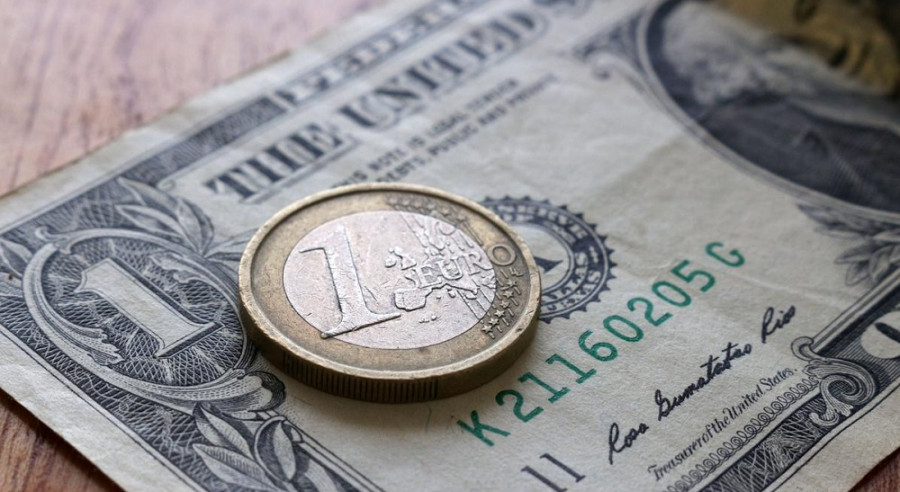The EUR/USD pair has drifted amid an almost empty economic calendar. Trading platforms opened after an extended three-day weekend, but activity in the currency market is low. Traditional pre-New Year stasis is observed, typical of the last week of the outgoing year. The bulls somewhat tested the resistance level at 1.1020 (the upper line of the Bollinger Bands indicator on the 4-hour chart) but then retreated to the base of the 1.10 figure. Last Friday, traders marked the price at 1.1041 - the highest value since August. However, they couldn't hold onto this level: many market participants preferred to take profits, putting a damp to the upward momentum.

On Tuesday, the pair's attempt at growth under conditions of a thin market is indicative. It indicates that the dollar remains under pressure, and last week's surge was not impulsive but a consequence of the impending divergence in the positions of the Federal Reserve and the European Central Bank. Other indicators confirm this as well – in particular, the U.S. Dollar Index remains near multi-month lows, at the base of the 101 figure. Additionally, according to CFTC data, non-commercial traders significantly increased their bearish bets on the greenback: by the end of the week, nearly 40,000 contracts were associated with expectations that the U.S. currency would fall. At the end of the previous week (that is, before the December Fed meeting), this was 10,000 contracts less.
However, it is not advisable to trust current price fluctuations – the thin market lives its own life, so to speak, according to its own rules, which are sometimes entirely illogical.
In order to build an uptrend, the bulls need to settle above the 1.1020 target, and then aim for the next high – 1.1060 (the upper line of the Bollinger Bands on the daily chart). The fundamental background contributes to the progress of this scenario – the dollar is under pressure from the Fed's dovish position, while the euro feels support from the ECB, whose representatives are ready to keep rates at the current level for at least the next six months. Therefore, the lethargy is explained solely by the traditional pre-New Year stasis typical of the last week of December.
This point should be emphasized, as there are no significant prerequisites for a trend reversal. Dovish expectations regarding the Fed's future course of actions continue to strengthen, while ECB officials continue to "hold the line," refuting rumors of imminent monetary easing. According to the CME FedWatch Tool, the probability of a 25 basis point rate cut at the conclusion of the March meeting approaches 80% (currently at 77%, before the release of the core PCE index, it was 70%). Furthermore, confidence in a 50 basis point rate cut in May, bringing it to 5.0%, is growing in the market, with the probability of this scenario currently at 73%. As for the June meeting, the probability of a rate cut to 4.75% stands at 66%.
Against such sentiments, it is challenging to envision a sustained rise in the U.S. dollar and, consequently, a decline in EUR/USD—unless there is a sharp increase in risk aversion in the markets (which is not currently observed) or if the euro weakens, which is also not observed. Last week, several ECB representatives (including Joachim Nagel, Luis de Guindos, Yannis Stournaras) stated that speculation about imminent monetary policy easing should be avoided, as interest rates will not be lowered in the foreseeable future. ECB President Christine Lagarde even outlined approximate timelines, stating that rates may remain at the current level "at least in the first half of 2024." She emphasized that the Governing Council members had not even discussed lowering rates.
Here, it is necessary to recall that Fed Chair Jerome Powell acknowledged, following the December meeting, that a rate cut would "surely be a topic of discussion at upcoming meetings." In this context, the updated dot plot is illustrative, suggesting a decrease in the benchmark interest rate by 75 basis points.
Thus, the EUR/USD pair retains the potential for further growth, primarily due to the policy divergence between the Fed and the ECB. Selling the pair in such fundamentally driven conditions is risky, even though the bullish momentum has effectively subsided. As for long positions, in my opinion, it is necessary for the price to consolidate above the 1.1020 target (the upper line of the Bollinger Bands indicator on the 4H timeframe). The pair is within the 1.10 figure, but this price barrier remains challenging for the bulls. The main targets for the upward movement are the levels of 1.1060 and 1.1100. It is premature to discuss higher price values (1.1250 – the upper line of the Bollinger Bands on the monthly timeframe) at this point.















 Download NOW!
Download NOW!
No comments:
Post a Comment